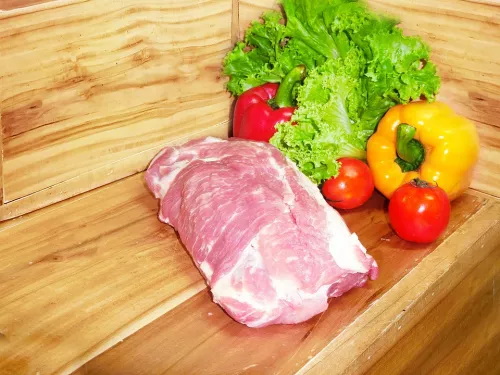According to the forecast of the National Union of Pig Breeders, this year Russian livestock breeders can give the country too much meat. A possible surplus of pork is associated with an increase in production, a decrease in exports, a drop in domestic demand and other reasons. Market participants fear that overproduction will cause a fall in the average price of products by 5-10% by the end of the year. This threatens with losses to enterprises, some of which may not survive such a blow to the budget. aif.ru talked to the Kuban pig breeders about the causes of problems and ways to solve them.
Close to the truth
Last year, wholesale pork prices rose by almost 25%, but 2022 could give producers a “pig” in the form of a reverse trend. So think in the National Union of Pig Breeders, where they recently presented their arithmetic of the problem. According to preliminary data, over the past six months, the production of pork in live weight has grown by 6.4%, and in general, an additional 250,000 tons of meat may “put pressure” on the market this year. This is despite the fact that, according to NSS estimates, in January-June of the year, pork exports will decrease by 23% due to difficulties with logistics caused by sanctions. A lack of domestic demand is also predicted. There are fears that against the background of the growth in the cost of meat, while maintaining all the trends in the next year or two, some enterprises may leave the market.
Among those who share these concerns is the general director of the Kuban SZhK Raduga, Vladimir Kasyanov. His farm has 1,300 sows, which, according to the accepted classification, is considered a medium-sized enterprise. Accordingly, its margin of safety is less than that of large manufacturers with a decent "fat".
“I believe that the presented forecast is close to the truth,” says Vladimir Kasyanov. Overproduction was expected last year, but then African swine fever intervened. Because of it, a lot of animals were knocked out in large industrial holdings, so there was no increase in volumes. But now the affected farms have recovered and even increased their production. An increase of six percent, named in official statistics, is a huge amount of pork. Therefore, the threat of pressure on the market due to overproduction is really real.”
Interestingly, the Krasnodar Territory itself is considered to be deficient in its own pork production. Although it has been growing in recent years, the needs of the region are much higher. But this shortage is more than compensated for by meat from giant enterprises from the Central and Northwestern Federal Districts. According to Vladimir Kasyanov, they now account for 70-80 percent of all pork production in Russia. Recently, they have had a very strong influence on the "weather" in the industry.
“There is a problem that can be conditionally called internal globalization,” continues Vladimir Kasyanov. — We are strongly tied to central Russia in everything. If I raise the price of pork in my city of Labinsk, then they simply won't buy it. Cheaper meat on a silver platter will be brought from central Russia - Voronezh, Kursk, Lipetsk, Belgorod. They have good logistics. Today it costs nothing to bring a pig, even alive, even in meat, a thousand kilometers away, there are no barriers.”
It is noteworthy that for about 5 years, two thirds of FFA products have been exported to Georgia. Until recently, it was a little more profitable than sales within Russia in terms of price and, on the whole, greatly helped out the Kuban enterprise. And since last year, the same large enterprises from central Russia have also entered the Georgian market and lowered pork prices there. For giants, the decline is not critical due to large production volumes, which cannot be said about medium and small farms.
Pig economics
The volume of meat production is directly linked to its value in the market, which affects the level of consumption. Last year, the price of pork went up due to a decrease in livestock in large farms due to the African plague. It still remains relatively high. For a kilogram of live weight they give 115-120 rubles, including VAT, which after cutting is about 180 rubles in wholesale. But this does not mean that all farms can make a good profit, because there are many other factors.
The income of pork producers largely depends on its cost, in which about 70% is feed. And in recent years, animal rations have risen in price faster than meat prices have risen.
Another problem he calls the competition of pork with chicken meat, the prices for both types of meat are interconnected and today are closer than ever in recent years. With the rise in the cost of pork, many people will simply prefer cheaper poultry meat. The limited income of the population is one of the key factors that makes overproduction a threat to many households.
“The issue of sales rests on the purchasing power of the population, like a wave on a breakwater,” continues Vladimir Kasyanov. “Therefore, I consider its increase, including through social payments, to be one of the ways to solve the problem. Russia also needs
© Inline LLC 2015-2026. Privacy Policy | Terms of Service